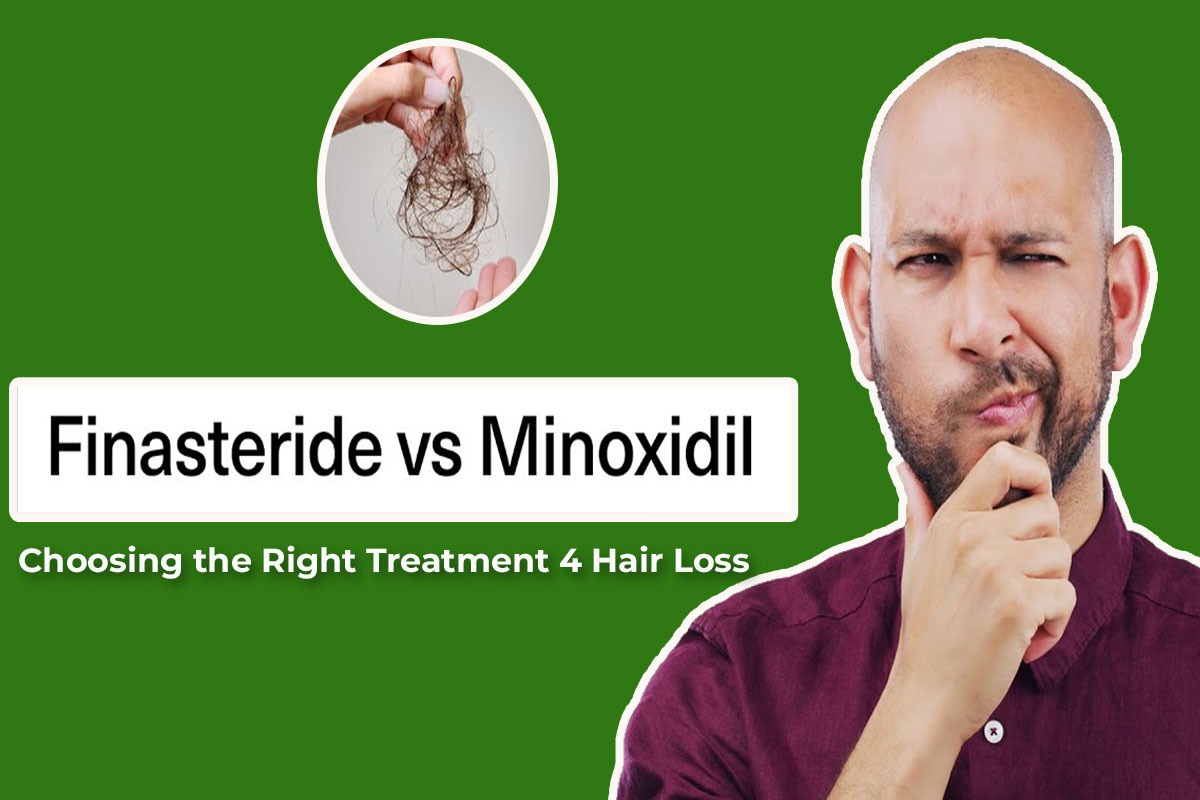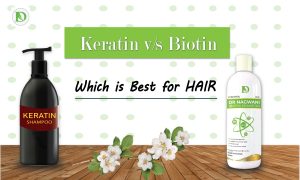Table of Contents
Minoxidil vs. Finasteride
Hair loss is a common concern for many individuals, impacting self-confidence and overall well-being. Fortunately, advancements in medical science have provided various treatment options to address this issue. Among the most popular medications for hair loss are Minoxidil and Finasteride. Both have proven efficacy, but they differ in terms of mechanism of action, effectiveness, side effects, and suitability for different individuals. In this comprehensive guide, we’ll explore the differences between Minoxidil and Finasteride to help you make an informed decision about which treatment may be right for you.
Understanding Minoxidil and Finasteride
What is Minoxidil?
Minoxidil, originally developed as a treatment for high blood pressure, was serendipitously discovered to stimulate hair growth as a side effect. Today, it is widely used as a topical solution or foam for the treatment of male and female pattern baldness. Minoxidil works by dilating blood vessels in the scalp, which increases blood flow to hair follicles and stimulates hair growth.
What is Finasteride?
Finasteride is an oral medication specifically designed to address hair loss in men. It works by inhibiting the conversion of testosterone into dihydrotestosterone (DHT), a hormone responsible for shrinking hair follicles and leading to hair loss. By reducing DHT levels in the scalp, Finasteride helps to prevent further hair loss and promote hair regrowth.
Mechanism of Action
How Does Minoxidil Work?
Minoxidil’s exact mechanism of action in promoting hair growth is not fully understood. However, it is believed to work by opening potassium channels in the cell membranes, which leads to increased blood flow to the hair follicles. This improved circulation nourishes the follicles and stimulates hair growth.
How Does Finasteride Work?
Finasteride works by hindering the compound 5-alpha reductase, which changes over testosterone into DHT. By reducing DHT levels in the scalp, Finasteride helps to reverse the miniaturization of hair follicles and prolong the growth phase of the hair cycle. This results in thicker, healthier hair over time.
Effectiveness
Minoxidil Effectiveness
Minoxidil has been shown to be effective in promoting hair growth in both men and women with male and female pattern baldness. Clinical studies have demonstrated that regular use of it can lead to significant improvements in hair density and thickness. However, it is important to note that results may vary from person to person, and continued use is necessary to maintain benefits.
Finasteride Effectiveness
Finasteride is highly effective in treating male pattern baldness, with studies showing that it can halt hair loss and promote regrowth in a significant percentage of men. The majority of men who use Finasteride experience some degree of hair regrowth, particularly in the crown and frontal areas of the scalp. Like Minoxidil, Finasteride requires continuous use to maintain results.
Side Effects
Minoxidil Side Effects
Common side effects of Minoxidil include scalp irritation, itching, and dryness. Some users may also experience increased hair shedding initially, which typically resolves with continued use. In rare cases, it may cause more severe side effects such as chest pain, rapid heartbeat, or dizziness. On the off chance that any unfavorable responses happen, it is critical to end use and counsel a medical services proficient.
Finasteride Side Effects
The most well-known side effect of Finasteride is sexual dysfunction, including decreased libido, erectile dysfunction, and decreased ejaculate volume. These side effects occur in a small percentage of users and usually resolve upon discontinuation of the medication. Other potential side effects of Finasteride may include breast tenderness or enlargement and mood changes.
Safety
Minoxidil Safety
Minoxidil is generally considered safe for long-term use when used as directed. However, it is important to follow the recommended dosage and application instructions to minimize the risk of side effects. It should not be used by individuals with certain medical conditions such as scalp infections or sunburned scalp.
Finasteride Safety
Finasteride is also considered safe for long-term use, but it may not be suitable for everyone. Women who are pregnant or may become pregnant should avoid handling crushed or broken Finasteride tablets due to the risk of fetal harm. Additionally, Finasteride may not be suitable for individuals with certain medical conditions such as liver disease or prostate cancer.
Suitability
Who Should Consider Minoxidil?
Minoxidil is suitable for both men and women experiencing mild to moderate hair loss. It is particularly effective for individuals with diffuse thinning or a receding hairline. It is available over the counter and does not require a prescription, making it easily accessible for most people.
Who Should Consider Finasteride?
Finasteride is primarily recommended for men with male pattern baldness, especially those experiencing hair loss at the crown or top of the scalp. It is not approved for use in women, particularly those who are pregnant or may become pregnant, due to the risk of fetal harm. A doctor’s prescription is required to take finasteride.
Combination Therapy
Some individuals may benefit from using both Minoxidil and Finasteride together, as they target hair loss through different mechanisms. Combining these medications may result in enhanced efficacy and improved outcomes for certain individuals. However, it is important to consult with a healthcare professional before starting combination therapy to ensure safety and efficacy.
Cost Analysis
Minoxidil Cost
Minoxidil is generally more affordable than Finasteride, as it is available over the counter and comes in generic formulations. The cost of Minoxidil may vary depending on the brand, concentration, and quantity purchased. However, it is generally considered to be a cost-effective option for long-term hair loss treatment.
Finasteride Cost
Finasteride is typically more expensive than Minoxidil, as it requires a prescription and may be available only in brand-name formulations. The cost of Finasteride may also vary depending on the dosage and quantity prescribed. While it may be more costly upfront, Finasteride may offer significant savings compared to other hair loss treatments in the long run.
Availability
Minoxidil Availability
Minoxidil is widely available over the counter at pharmacies, drugstores, and online retailers. It comes in different definitions, including effective arrangements, froths, and shampoos. It is readily accessible to most people without the need for a prescription.
Finasteride Availability
Finasteride is available by prescription only and must be obtained from a healthcare provider, such as a doctor or dermatologist. It isn’t available without a prescription and can’t be bought without a solution. While this may require an extra step for obtaining the medication, it ensures that Finasteride is used appropriately under medical supervision.
User Experience
Minoxidil User Experience
Many individuals who use Minoxidil report positive experiences with the medication, citing noticeable improvements in hair density, thickness, and overall appearance. Some users may experience initial shedding or irritation, but these side effects usually subside with continued use. Overall, Minoxidil is well-tolerated by most people and has a high satisfaction rate among users.
Finasteride User Experience
Similarly, Finasteride users often report significant improvements in hair growth and thickness, particularly in the crown and frontal areas of the scalp. While some users may experience sexual side effects, the majority of men who use Finasteride are satisfied with the results. With proper use and monitoring, Finasteride can be an effective long-term solution for male pattern baldness.
Clinical Studies
Numerous clinical studies have been conducted to evaluate the efficacy and safety of both Minoxidil and Finasteride in treating hair loss. These studies have consistently demonstrated that both medications are effective in promoting hair growth and reducing hair loss in men and women with androgenetic alopecia. Additionally, long-term studies have shown that the benefits of Minoxidil and Finasteride persist with continued use over several years.
Regulatory Approval
Both Minoxidil and Finasteride have been approved by regulatory agencies such as the FDA for the treatment of hair loss. Minoxidil was the first medication approved for this indication, followed by Finasteride. These approvals confirm the safety and efficacy of these medications for treating hair loss and provide assurance to healthcare providers and consumers alike.
Alternatives
While Minoxidil and Finasteride are the most widely used medications for hair loss, there are other treatment options available for those who may not respond well to these medications or prefer alternative approaches. These alternatives include natural remedies, hair transplants, laser therapy, and platelet-rich plasma (PRP) therapy. Each option has its own advantages and limitations, and consulting with a healthcare professional is recommended to determine the most suitable treatment plan.
Conclusion
In conclusion, Minoxidil and Finasteride are two effective medications for treating hair loss, each with its own unique mechanism of action, effectiveness, side effects, and suitability for different individuals. While Minoxidil is a topical solution that improves blood flow to the scalp, Finasteride is an oral medication that inhibits the production of DHT. Both medications have been shown to promote hair growth and reduce hair loss in men and women with androgenetic alopecia. Ultimately, the choice between Minoxidil and Finasteride depends on individual preferences, severity of hair loss, and potential side effects. Consulting with a hair professional like Dr. Anand Nagwani is essential to determine the most appropriate treatment plan for achieving optimal results.
FAQs (Frequently Asked Questions)
- Which is better for hair loss, Minoxidil or Finasteride?
- Both Minoxidil and Finasteride are effective treatments for hair loss, but they work through different mechanisms. Minoxidil improves blood flow to the scalp, while Finasteride inhibits the production of DHT. The choice between the two depends on individual factors such as the severity of hair loss, personal preferences, and potential side effects.
- Are there any natural alternatives to Minoxidil and Finasteride?
- Yes, there are various natural remedies and supplements that may help promote hair growth, although their efficacy may vary. These alternatives include saw palmetto, pumpkin seed oil, and biotin supplements.
- Can women use Finasteride for hair loss?
- Finasteride is not approved for use in women, particularly those who are pregnant or may become pregnant, due to the risk of fetal harm. Women experiencing hair loss should consult with a healthcare professional to explore alternative treatment options.
- How long does it take to see results with Minoxidil and Finasteride?
- It typically takes several months of consistent use before noticeable improvements in hair growth are seen with both Minoxidil and Finasteride. Continued use is necessary to maintain benefits over time.
- Are there any lifestyle changes that can help prevent hair loss?
- Maintaining a healthy lifestyle, including a balanced diet, regular exercise, and stress management, can help promote overall hair health and reduce the risk of hair loss. Additionally, avoiding harsh hair treatments and minimizing heat styling can help prevent further damage to the hair follicles.
By considering the information provided in this guide and consulting with a healthcare professional, you can make an informed decision about which treatment option may be right for you.



